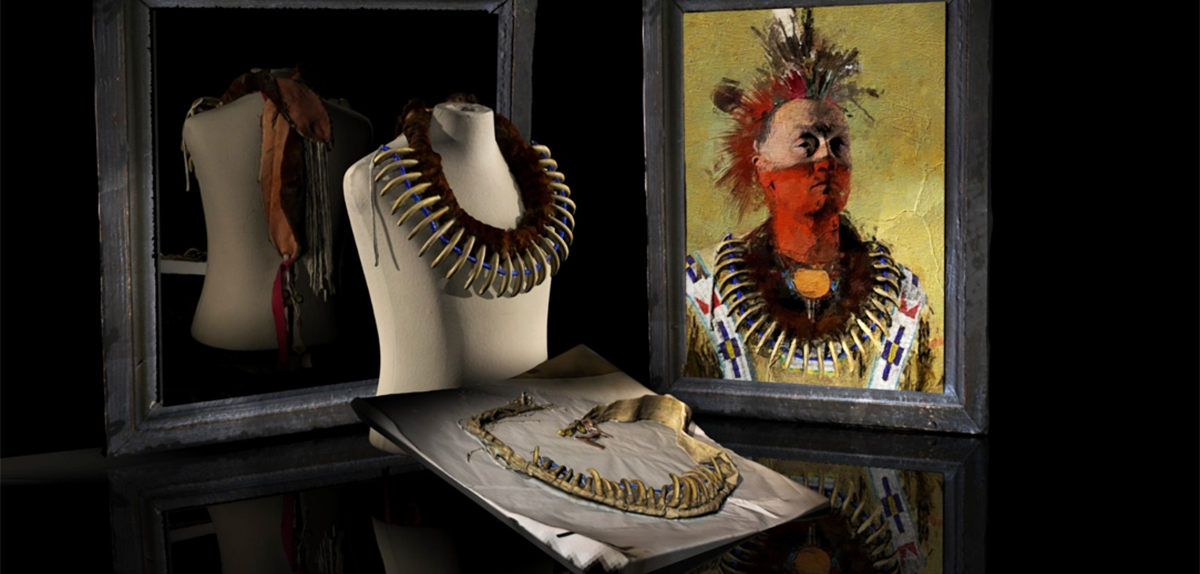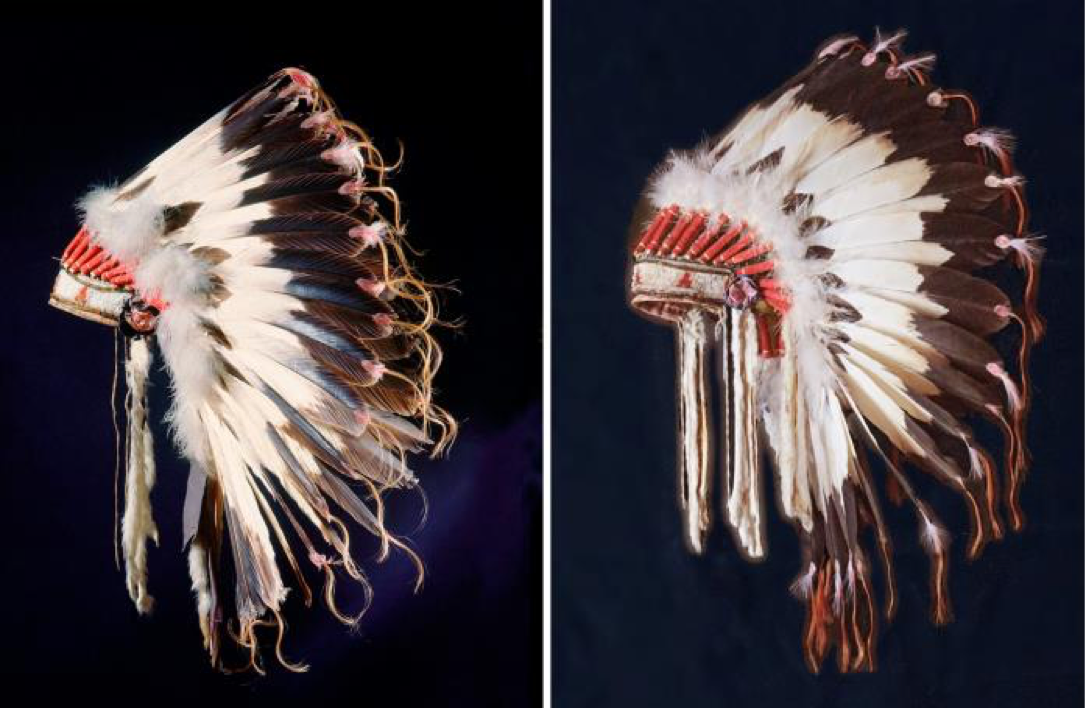You are here
Understanding and reproducing ritual objects via ethnomimetics

While biomimetics is directly inspired by nature, ethnomimetics draws inspiration from people, materials and techniques developed over the course of centuries by ethnic groups whose culture encourages interaction with otherness, i.e. non-human species and other natural elements, along with their respective properties. Backed by the CNRS, the I-Mat project highlights the concept of ethnomimetics, using it as the basis of an innovative approach to traditional knowledge in relation to the heritage ritual objects of native societies in North America. The project is headed by the anthropologist Frédéric Saumade, seconded by the physicist and materials expert Thierry Sarnet and Mathieu Mourey, a PhD student in anthropology.1
From the colonial era through the mid-twentieth century, Western ethnologists and other scientists who spent time among traditional societies were in the habit of collecting – sometimes by theft (as Michel Leiris admits in Phantom Africa) – objects of great symbolic importance, which were then donated to museums or sold to collectors. Now that such practices have – fortunately – been banned, the focus is on equitable interactive exchanges between Western and indigenous cultures. The I-Mat project involves Native American ethnic groups, including the Lakota Sioux in South Dakota and the Pueblo in New Mexico, who share and promote their artisanal know-how, under their control and to their financial benefit.
Ancestral know-how meets new technologies
The reproduction of objects for the purpose of experimenting with technical know-how by imitation is nothing new, as shown in André Leroi-Gourhan’s essays on experimental archaeology.2 In keeping with this methodological approach, the I-Mat team studies and produces facsimiles of certain Native American objects, combining traditional and leading-edge techniques, including computer-aided design, photogrammetry, 3D scanning and 3D printing. In addition to museological preservation, the dissemination of ancestral knowledge and the reintroduction of ancient methods, the programme encourages museums to return certain items of great value to the native cultures in question.
Particular attention is paid to materials derived from flora and fauna. The protected animal and plant species used by Native American artisans are held sacred in their societies, but the use of their parts can also be prohibited by law. This is the case for eagle feathers, bear claws and the wood of Populus fremontii (Frémont's cottonwood) from the Rio Grande Valley, a riparian forest preserve in a semi-desert environment. This reproduction work offers a solution for some of the craftsmen’s supply problems. At the same time, the participants learn in the field the ingenious techniques used for assembling ritual objects using traditional materials, such as natural solvents and dyes, which can be a precious contribution towards the development of a sustainable industry.

The I-Mat project proceeds as follows: the ethnographic fieldwork is carried out in Native American communities, concentrating on craftsmen and specialists in traditional rituals. The emphasis is on the objects with the most symbolic power for the native populations: feather or horned headdresses, grizzly claw necklaces, deer or buffalo skin garments, traditional drums, ritual dance accessories, etc. The work also includes participative observation with certain native craftsmen, who themselves produce replicas of ancient ritual objects for museological or commercial purposes.
Meticulously faithful replicas
The goal is to spotlight what makes the I-Mat project’s methodology different from that of conventional copies, especially in terms of fidelity in the mimetic process. The research also extends to investigations in the reserves of international museums with major collections of Native American artefacts, like the Peabody Museum at Harvard University (a partner of the I-Mat project), the Musée du Quai Branly-Jacques Chirac in Paris, the Musée des Confluences in Lyon (southeastern France), the Museum der Kulturen in Basel, the Bernisches Historisches Museum in Bern (both in Switzerland), and the Braunschweig and Radebeul museums in Germany, as well as various private collections.
A web platform devoted to ethnomimetics and the I-Mat project is under construction at www.ethnomimetisme.org. It will offer illustrations of certain case studies, including the creation of a museum replica of the headdress worn by the Arapahoe chief Yellow Calf, the result of a collaboration between the CNRS, the British Museum, the University of Wyoming and Central Wyoming College. The restitution of the eagle feather bonnet is currently underway.

One of the most difficult parts of the project was replacing the feathers of the golden eagle (Aquila chrysaetos), a protected species, with domestic bird feathers (turkey or vulture). The transformation of the latter into replicas of golden eagle feathers involved a variety of techniques, including a laser treatment for surface nanostructuring as well as both additive and subtractive chemical processes (dyeing and bleaching, respectively). The replica was made from dark-coloured domestic feathers that were partially bleached to resemble the white, dark-tipped tailfeathers of a juvenile golden eagle, like the ones in the original headdress.
Work was also conducted on a 19th century necklace of claws from a plains grizzly bear (Ursus arctos horribilis), a species that is now extinct. The state of conservation of the original artefact (necklace D979-3-97, Musée des Confluences, Lyon) made a conventional restoration impossible. Using 3D scanning and printing, the researchers replicated each claw individually to recreate the object in its presumed original state.
Combining biomimetics and ethnomimetics
Lastly, the team engaged in ethnographic observation of Pueblo drum production in Cochiti, New Mexico. Dead tree trunks from protected species (cottonwood and aspen) are already partially hollowed out by the natural decay of the wood under the action of moisture and insects. The craftsman completes nature’s work, cutting away the remaining rotten wood until he is able to extract the sapwood, which is more resistant to decomposition. Once it is cleaned and its bark is trimmed with a wood chisel, the section of trunk is fitted with rawhide heads, turning it into a drum. In this process, biomimetics is combined with ethnomimetics (see Figures 5, 6 and 7).

The craftsman thus illustrates the potential of using reclaimed natural materials and animal by-products for eco-sustainable production. In this case, the resulting objects can be used for ritual or purely musical purposes, for collection or decoration, providing a commercial outlet in addition to equipment for traditional Native American dances.
The concept of ethnomimetics is founded on the materials, techniques and cultural heritage of native societies. But taken as a whole, the body of indigenous peoples’ traditional knowledge, in some cases lost or forgotten, offers fresh directions for responding to modern-day requirements in terms of production methods, the consumption of goods and energy, the reuse of wastes and the recycling of goods, the use of traditional remedies and medicines, food supplies, and ecosystem management.
- 1. Frédéric Saumade is a professor at Aix-Marseille Université (AMU), Thierry Sarnet is a CNRS researcher, and Mathieu Mourey is a PhD student at the CNRS. All three are members of the IDEMEC institute of Mediterranean, European and comparative ethnology (CNRS / AMU). The I-Mat project is funded by the Mission for Transversal and Interdisciplinary Initiatives (MITI).
- 2. See for example André Leroi-Gourhan, L’homme et la Matière 1(in French), Paris.















